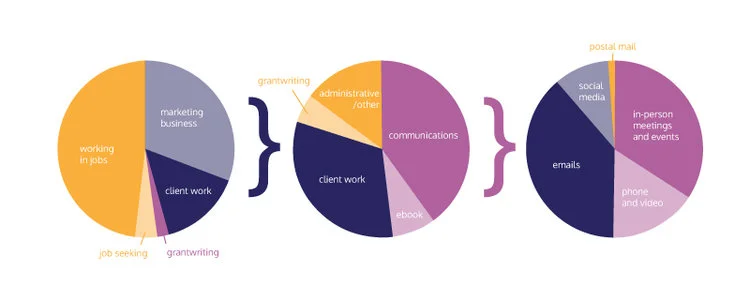Nonprofits often believe that because they don’t sell products, marketing doesn’t need to be a priority. But nonprofits do provide services, and because services are inherently relational, building relationships should be job number one. That’s what marketing is all about: connecting people. Some individuals (and therefore organizations) feel awkward about self-promotion, but everyone knows that what keeps nonprofits going is the people they serve, the team providing solutions, and the donors and funders that make it possible. You don’t need a multi-million dollar campaign to have successful marketing. The cash and even the tools that you have on hand is less important than the actions that you commit to taking. There’s really only nine things you absolutely must have.
Read MoreA couple months ago, I was fortunate to be able to attend the Collective Impact Summit where a wide range of topics related to working collaboratively were discussed. Naturally, the whole time I had my eyes peeled for ways that relevant knowledge is not only being captured but is being transferred. Since then, I've run across a few extra examples of how folks are using visuals in particular to share insights about collaboration. Here are ten visuals I recreated to synthesize my learning. I believe they describe just about everything there is to know about Collective Impact to date.
Read MoreIn recent years, the power and popularity of storytelling has become commonplace. Research shows that stories are a part of all that we do because they help us in many important ways. Any work that involves people always tells a story. When we recognize that, we can ask ourselves whether the story we are telling is the one we should be.
Read MoreMany of us have heard colleagues complain about team efforts that feel like “herding cats” or “rearranging chairs on the Titanic.” It is very common for group members to report dissatisfaction with meeting processes in particular. This can become a vicious cycle because an individual’s engagement with the group will largely depend on their perception of the group. While many may realize that their group is stuck, few may realize that miscommunication is at the root.
Read MoreThe turn of the year is always a great opportunity to inquire. What went well last year? What does it make sense to do differently next year?
Because reflective practice is such a big piece of who I am personally and professionally, I have decided to make my annual report this year more than a mere collection of meaningful visuals.
I'm delighted to share the major questions that I posed to myself, and what I discovered when I looked back on all the data I collected over the year.
Read MoreI drove into Estes Park at sunrise, arriving early for the Tapestry conference on data storytelling. I hadn't planned to sketch the presentations that day, but when I joined my colleagues for the morning keynote, I found a pad of paper (and a somewhat sloppy ballpoint pen) that the Stanley Hotel had provided for each attendee. And ,of course, I couldn't resist. Here is a collection of my notes from the eight speakers that followed, each contributing to a delightful, varied conversation about the many nuances of telling stories with data.
Read MoreWe are living in the golden age of information. Not just because there is so much we can easily find at our fingertips but because there is such incredible potential to be generating relevant information as well. All for virtually free. I'd like to share the most useful dashboards I've found thus far that reflect both of these capacities.
Read MoreThink your real problem is lack of resources, of time, money, or skills? It may be even bigger than that. The biggest problems are usually the most invisible (and therefore the hardest to solve too). And when you do start to see the forest through the trees, they can seem insurmountable. But for those of us interested in impact, these problems are also the ones worth taking all the risks to solve.
Read MoreWelcome to the last blog in my Show and Tell Tuesday series, which so far has featured 24 types of visuals for showing all sorts of information, from systems to people to amounts to time. The final three mentioned here are an assortment of fun ones I just couldn't end the series without mentioning.
Read More








